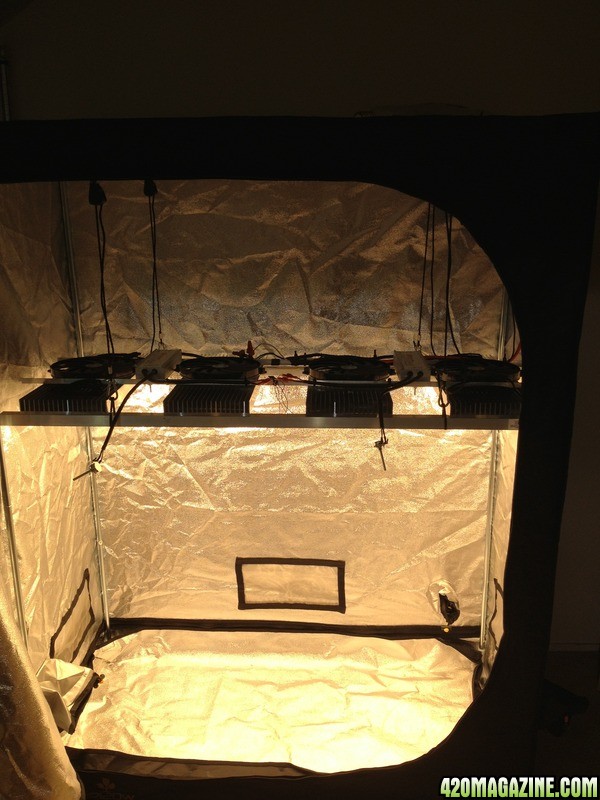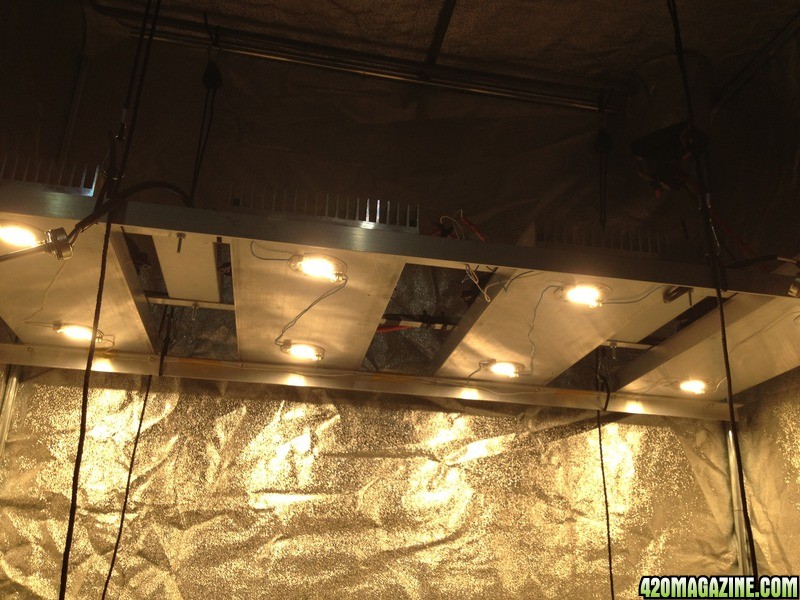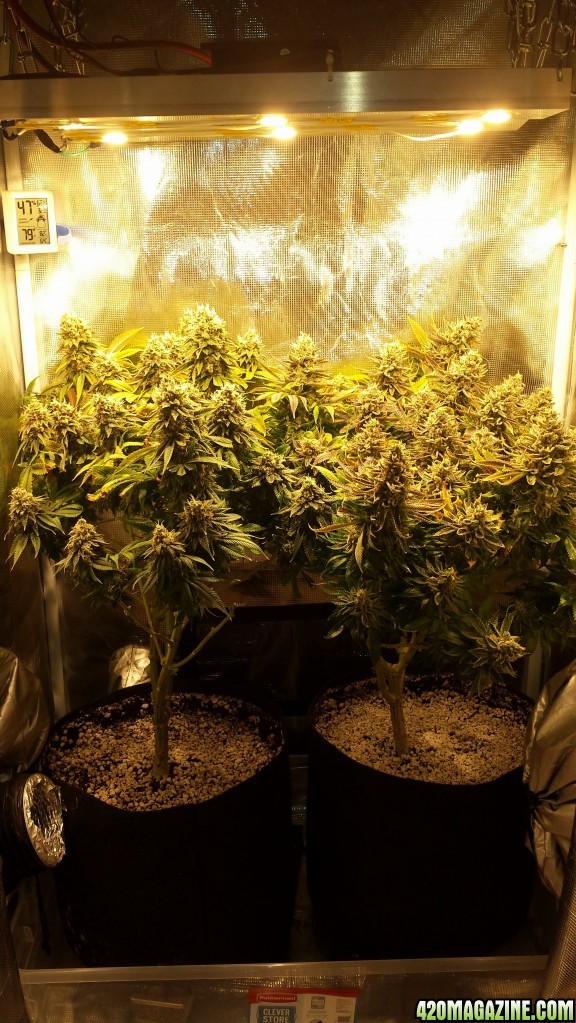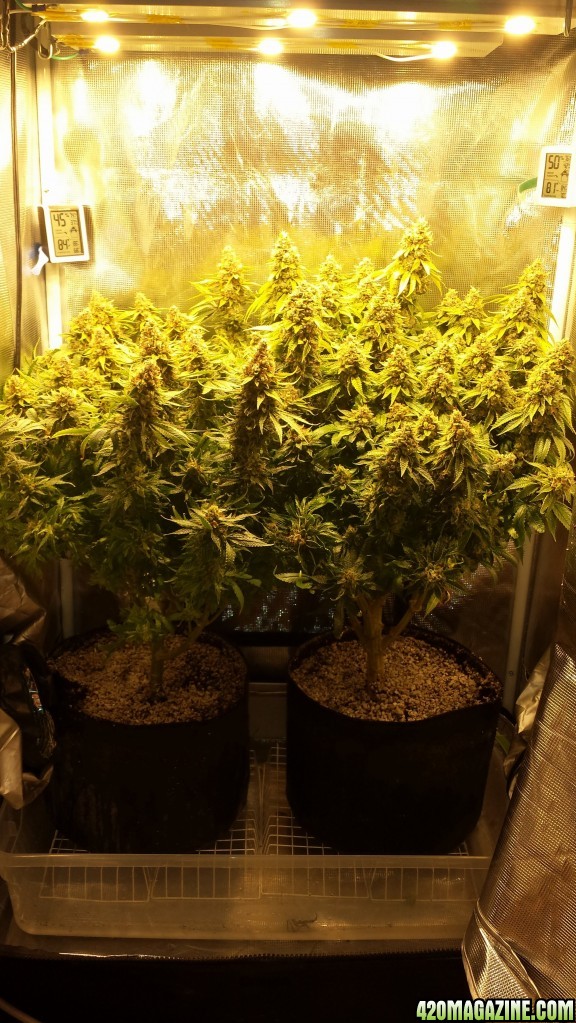I was checking them out. Looks like the 500 covers a 3x3 area ok. Much better than some that I cant mention. From the video Im seeing on the numbers, they are about 8 inches away. The PAR grids they had still showed all the same prob most commercial ones do. Too much in the middle and not enough on the outer edges. So it being only good for a 3x3, Thats 56 watts per Ft²
Id like to know how they Gain efficiency by adding a Phosphor coating? (Thats the reason the 2700K cobs dont have that great of efficiency)
My lights personally may not be beating the cost for PAR but thats because I run more of them softer to get a very high efficiency and dont use smaller cpu heatsinks for active cooling only.
Here is a light you can throw together for around the same price as the PF500 that puts out a bunch more PAR for the buck:
PF500 = 675 PPFD on a 4x4 Area (so they say but wont release any data on thier "special chips") All I see is a video of them holding the PAR meter at around 8" and you never see the meter numbers. S0 I dont trust thier numbers claimed. Transparency on thier part would give me much more trust in them.
9x Vero29 4k Driven at 2.1A 3 rows of 3 cobs for a good even coverage.
708 (dissipation W) * .4077 (COB efficiency at the Current) = 289 PAR W
289 PAR W/16 ft² = 18.05 PAR W/ft²
18 * 10.7 (ft² in 1 m²) = 193 PAR W/m²
193 * 4.62 (umol/PAR W for CXA 3000K) = 892 PPFD on a 4x4 Area or 1585 PPFD for a 3x3
Thats about .71 bucks a watt and
BML spyder600 was tested by a NIST lab as part of a university study, conducted under one of the most well known plant scientist in recent decades. And recorded at 1.7µmol/j...26% more than the PF500...or you can look at it like a glass half full...PF500 puts out 21% less.
Study linked below....with many more current, and outdated lights, that are and have been producing 1.4+µmols/w for a while. Top performing lights from any technology are currently hitting 1.7-2.0+µmols/w...and still pumping 750-1000+w onto a 1.5m2 canopy.
PLOS ONE: Economic Analysis of Greenhouse Lighting: Light Emitting Diodes vs. High Intensity Discharge Fixtures






 HID rules, in that department.
HID rules, in that department.


 At $2/watt it's a great panel, though - I love it - great tech, very very low heat, very high efficiency. I think I saw 1.35 umols/watt? Versus 0.7-0.8 for HID? It's on the site.
At $2/watt it's a great panel, though - I love it - great tech, very very low heat, very high efficiency. I think I saw 1.35 umols/watt? Versus 0.7-0.8 for HID? It's on the site.